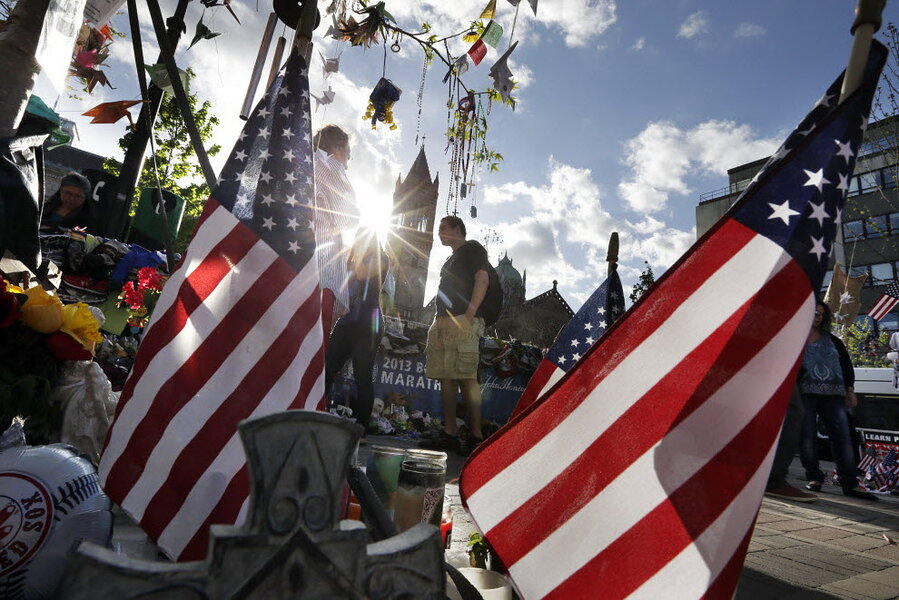Boston Marathon bombings: a timeline
Loading...
2013
April 15: Two bombs go off near the finish line of the Boston Marathon, killing three and injuring at least 264.
April 18: A police officer at the Massachusetts Institute of Technology in Cambridge is shot and killed by Tamerlan and Dzhokhar Tsarnaev, according to a subsequent indictment.
April 19: Dzhokhar is captured in Watertown, Mass., after an intense manhunt and the death of Tamerlan in a chaotic scene with law enforcement.
April 22: While hospitalized for injuries sustained during the manhunt, Tsarnaev is charged with use of a weapon of mass destruction and malicious destruction of property. Once he is read his rights, he stops talking to investigators.
May 1: Dias Kadyrbayev, Azamat Tazhayakov, and Robel Phillipos – college friends of Tsarnaev’s – are charged with impeding the federal investigation of the bombings.
July 17: A Rolling Stone cover features what many call a glamorous photo of Tsarnaev.
July 18: In reaction to the Rolling Stone cover, a tactical photographer for the Massachusetts State Police leaks photos of Tsarnaev’s capture.
2014
Jan. 30: Attorney General Eric Holder announces that prosecutors will seek the death penalty for Tsarnaev.
April 17: ABC News releases images of an anti-American note written in the boat where Tsarnaev was captured.
April 21: The Boston Marathon features a larger-than-usual field of about 36,000 runners and many stories of recovery and achievement.
July 21: Tazhayakov is found guilty of obstructing justice and conspiring to obstruct justice.
Aug. 21: Kadyrbayev pleads guilty to charges of obstructing justice and conspiring to obstruct justice.
Sept. 24: District Judge George O’Toole delays the start of the Tsarnaev trial to 2015 and denies a request to move the trial from Boston.
Oct. 28: Phillipos is found guilty of lying to investigators.
Jan. 31: Judge O'Toole denies a motion by the defense team to seek a delay, and for the second time denies a request for a change of venue.
2015
Jan. 5: Jury selection in the Tsarnaev trial is scheduled to begin.








